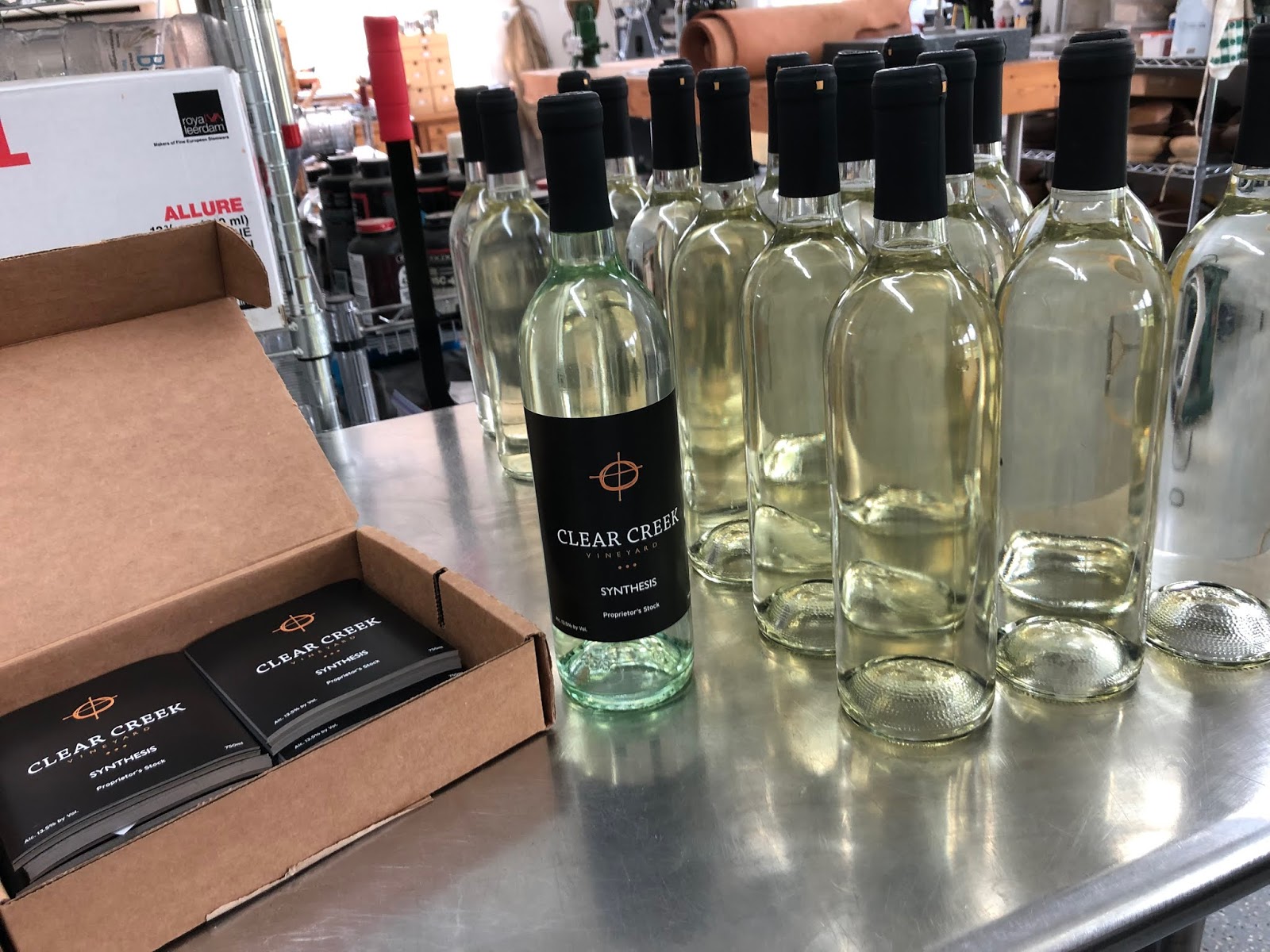It's been 20 months since my last post of July 15, 2018. It was more than a little surprising that 2019 came and went without a single entry herein, particularly since it has been a period of great change in the vineyard that will take some serious catch-up work to cover the lost year that was anything but lost.
A draft dated July 30, 2018, written in the middle of a dreary, dry, hot summer provides a starting point:
It has been an odd—and in some ways, devastating—year in the vineyard. The late freeze April 16 struck when the vines had three inch shoots, knocking back the Syrah, Baco Noir, Viognier and Zinfandel. It also resulted in severe damage to the Cabernet Sauvignon which was at the bud swell stage. That was just Round One.
Round Two came the latter half of May when the skies opened up and dumped seven inches of rain during flowering, affecting fruit set on the Cabernet Sauvignon, Merlot and Chambourcin. The ground was totally saturated, requiring weeks for the water to drain at the shop end of the vineyard. I had an open end-post hole there that stayed filled with water until I displaced it with concrete. I have since come to believe that much of the vine loss at that end of the vineyard was due to the double whammy of late frost and saturated soil. I am considering French drains there to move that water on out more quickly, as this is a repeat performance from 2016 when the end-post holes filled with water and stayed full for several weeks.
I completed a survey of my expected crop measured against last year, and figure I will be about 60 percent of 2017.
The drought that followed the May floods—we had one inch of rain from June 1 to July 20—has done much to ensure the smaller 2018 crop suffered much less fungus, and the grapes themselves are much better overall. I have gone more than a month without the need to spray. The lack of rainfall did affect the vines, causing some of them in poorer soil to exhibit stress from the combination of high temp and little rain.
It's clear from the dark mood of this draft that the weather got the best of me, starting with the late frost, followed by depressing amounts of rainfall, then persistent heat and drought. It captures what I remember as defeat at the hands of mother nature.
Ironically, the reality of the 2018 season puts all the gloom and doom to rest; the results completely defied expectations.
A week later, on the evening of Aug. 12, we picked 144 lbs of red grapes representing every red variety I have other than Cabernet Sauvignon. They included Syrah, Zinfandel, St. Vincent, Chambourcin Arandell and Merlot, in decreasing quantities from 74 to 5 lbs respectively. After sorting, they were crushed, destemmed and fermented together. Sugar was low at 17 degrees brix and required me to add 4 lbs. of sugar to achieve 21.5 degrees brix. I picked 83 lbs. of Cabernet Sauvignon 10 days later on Aug. at 21 degrees brix and a pH of 3.4. In all, I ended up with 227 lbs. of red grapes in 2018 vs. 175 lbs. of red grapes in 2017.
My forecast of a 40 percent reduction in 2018 proved me a poor prognosticator. The red wines are sitting next to me here in my office still in their carboys—two red field blend and one Cabernet Sauvignon—awaiting bottling. They are uniformly better than my first wines, the Cabernet far better than the red blend. Ripeness wins the day.
At the end of the day, 2018 was a quite a lesson for this novice, and a turning point for my vineyard. While happy with my progress in the winery, I was dissatisfied with many of the choices I had made in 2015 when I planned and planted the original six rows of vines. I closed out 2018 by pulling all my original vines, saving only the Syrah, Cabernet Sauvignon and Cabernet Franc, in preparation for major changes in 2019. And that, as they say, is a whole n'other story.


Comments
Post a Comment